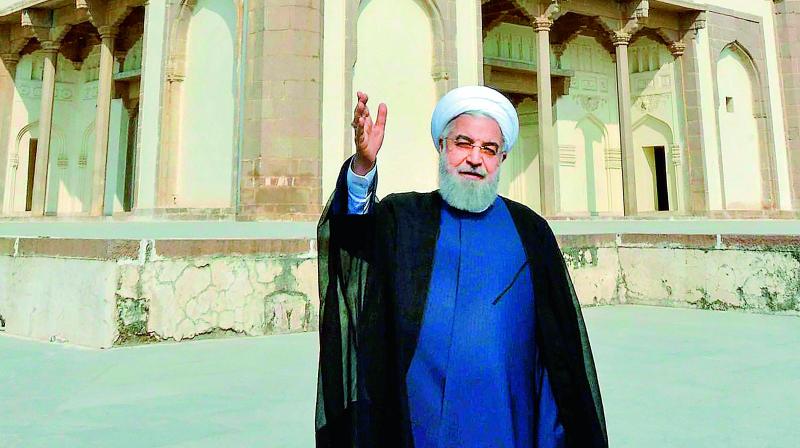Closer Iran links part of India's wider vision
Tehran is helped in breaking out of diplomatic isolation caused by the US sanctions.

The recent visit of Iranian President Hassan Rouhani to India led to the two countries signing nine agreements — among them one to further facilitate India’s partnership in expanding the present and future operations at the strategically-located Chabahar port in southern Iran. As Iran is under American sanctions, the two countries have also hit upon the idea of Indian investments through the rupee route, a device that should not draw America’s ire since dollar transactions are eschewed. In any case, the United States had indicated last year that it would not oppose business ties between India and Iran. The agreements apart, the visit of the Iranian leader was important in itself as it came not long after Prime Minister Narendra Modi’s efforts to woo Israel and the Sunni Arab regimes closest to Tel Aviv — Saudi Arabia and the UAE. In essence, Mr Rouhani’s visit underlines the strategic nature of relations toward which the two countries seem to be moving.
Naturally, both are benefited. Tehran is helped in breaking out of diplomatic isolation caused by the US sanctions. New Delhi gains transit routes through Iran to Afghanistan and Central Asia, bypassing Pakistan, as well as to Europe via the North-South transit corridor. New Delhi’s position in Kabul is also likely to be strengthened as a result of a cooperative posture towards Tehran. Lately, influential elements in Afghanistan have been critical of India’s growing concord with the United States. After two hours of bilateral talks with Prime Minister Narendra Modi, Mr Rouhani said the two countries had no divergences on the Afghan question.
The fortifying of India-Iran relations and the buttressing of Indian efforts at Chabahar will also help bring more substance to this nation’s strategic posture in the western Indian Ocean, a point of no mean significance when China is seeking to make forays in the region. India paying strategic attention to this end of the Indian Ocean, which connects energy-rich West Asia to the Asean region, was also given a boost recently when the Prime Minister visited Oman after his recent trip to the Palestinian territories and the UAE. In Oman, India has signed an agreement to secure the military use of Duqm port, located to the south of the Gulf of Oman, the crucial passageway to the Gulf of Iran, which is not far from Chabahar. Chabahar, Duqm, and the Seychelles facility at Assumption have come to fruition after many years of diplomacy, stretching across the UPA and NDA-2 era. The point, however, is that these should be made to count. That can only happen if India starts to deliver on its strategic vision. For that to happen, its fragile diplomatic relations in the immediate neighbourhood — so evident in the Narendra Modi era — should be improved.

